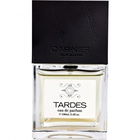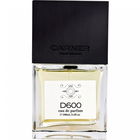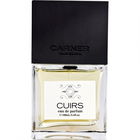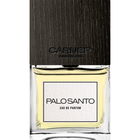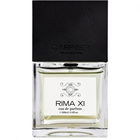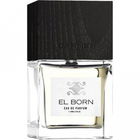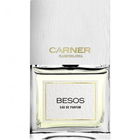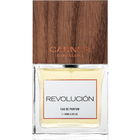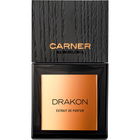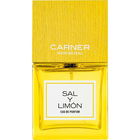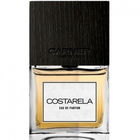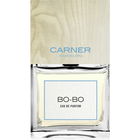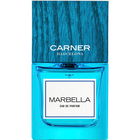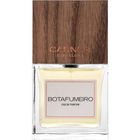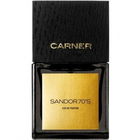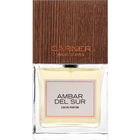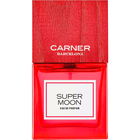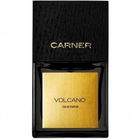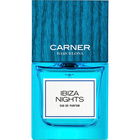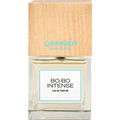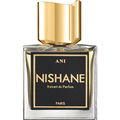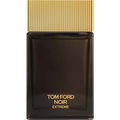
Axiomatic
149 Reviews
Translated · Show original

Axiomatic
Top Review
45
Among the Olmecs
One of the questions that constantly arises for me regarding the fragrance family is the category "oriental."
As soon as a resinous base comes into contact with vanilla, the fragrance is transported to the Near East.
However, vanilla is not native there and has only been known to the West as a spice and fragrance for a few centuries.
I have deliberately not categorized the following fragrance as oriental and would like to offer a somewhat different suggestion for categorization.
Without the daring Parfumo Kokusai, this fragrance adventure would not have been possible.
It deserves the noble badge of the Jade Jaguars.
Sizzle!
Sweetly bitter, slightly earthy calamus with its medicinal healing properties for the digestive tract welcomes us on this exploratory adventure.
Further north along the Gulf of Mexico, this marsh grass thrives; it was given to us as protection against stomach upsets and to strengthen us on our journey.
Logbook entry on resilient, dry papyrus.
"The scent of the rhizome calms and is relaxing. Unusually accessible, camphor-like."
At the market, we stocked up on pepper, which was supposed to serve as a preservative for our meat provisions and for liberated lungs.
We assumed the spice came from Southwest India, but we were mistaken.
Here, they call the local variety of pepper Xocosuchil, with slightly larger and thicker grains, rich in aromas.
Alongside the conventional warm pepper scent, a bit of clove and fresh coriander seeds mix in, broadening the fragrance spectrum.
The vendor smiled slyly, her bright and colorful ribbons artfully woven in her hair.
"So the jaguar lures you into the jungle, Señores.
Take the jade amulets with you; there are treacherous flowers there!"
Thus, we entered the dense rainforest of this subtropical region of Mexico between the states of Veracruz and Tabasco.
The usual floods of the rivers piled up decayed mahogany and cedar wood on the banks, the scent so ethereal and animalistic. In the cycle of becoming and dying of the feathered serpent.
In Xalapa, locals from the Spanish Extremadura advised us not only to impregnate our leather boots but also our cotton shirts and pants with labdanum; yes, even a pomade for the skin should protect us from insects.
Dried cistus in the right breast pocket comforted us amidst the darkness of the Olmec realm.
The giant stone head of this culture, full of mysteries, had been the impetus for our journey.
But what awaited us?
Were we up to it?
The impregnation, the decayed wood, the spices-all of this colored our perception filter in brownish shades.
Disastrous.
These were the colors of the Nauyaca, that lancehead viper with feared excitement and deadly venom.
The leather of the boots withstood its bite and saved our lives. We managed to escape in time and defeat the viper.
Was it the clear calamus that made us, as if hypnotized and pushing away fear, still want to reach the cedar wrapped in vanilla?
And then, like a flash of light, a jade-green parrot with beautiful plumage proudly flew over our heads.
Delicate was the scent of its feathers, powdery diffuse with orange and pink flowers.
It settled on the climbing plant and started chattering, as if telling us the fateful story of Princess Morgenstern and her abductor, Prince Young Deer.
How they were hunted and killed by the priests of the harvest goddess.
He was reborn as a powerful shrub, she as an orchid caressing him.
And from her blood, vanilla grew.
Several centuries later, the Aztecs would call it Tlilxochitl, the black flower.
Here, it was simply called the hunted flower, Caxixanath.
The pitch-black pods clouded our senses, deep dark and leathery their deceptively sweet and fleshy scent.
The hummingbirds were no different. Lured by the greenish-yellow flowers, they helped pollinate the precious plant during the short window of blooming.
The strange splendor of this climbing plant captivated us, causing us to forget our surroundings.
The growl of the jaguar woke us.
Without moving, we stared transfixed at the king of the jungle.
When the big cat spotted our jade amulets, it strutted a few steps and gracefully settled before the ball player.
The unimaginably ancient, artfully carved stone depiction of the brave athlete, conqueror of the snake, protector of the birds, and admirer of the jaguar.
There he sat before the native cedars, the noble one.
Everything fell into place, and we were rewarded with this mystical image.
And secretly, we looked forward to that well-deserved refreshment, the scent of which wafted through earthy ground and dense foliage to us.
Somewhere in the distance, the noble drink was being prepared; we knew that.
Only earthy cocoa and bitter vanilla.
It smelled so different, so strengthening, so painfully far away.
It was the vanilla that was to grant us salvation.
We left the jungle and reached our lodging.
With great joy, we were welcomed among the hosts.
We must have made an impression on them with all the scents.
Freshly medicinal was the calamus, broad-spectrum pepper, dark, daring woods, protective labdanum, airy flowers, earthy mysteries, and a strangely bitter vanilla.
From now on, we belonged to the jaguars.
Did we now smell Mesoamerican?
As soon as a resinous base comes into contact with vanilla, the fragrance is transported to the Near East.
However, vanilla is not native there and has only been known to the West as a spice and fragrance for a few centuries.
I have deliberately not categorized the following fragrance as oriental and would like to offer a somewhat different suggestion for categorization.
Without the daring Parfumo Kokusai, this fragrance adventure would not have been possible.
It deserves the noble badge of the Jade Jaguars.
Sizzle!
Sweetly bitter, slightly earthy calamus with its medicinal healing properties for the digestive tract welcomes us on this exploratory adventure.
Further north along the Gulf of Mexico, this marsh grass thrives; it was given to us as protection against stomach upsets and to strengthen us on our journey.
Logbook entry on resilient, dry papyrus.
"The scent of the rhizome calms and is relaxing. Unusually accessible, camphor-like."
At the market, we stocked up on pepper, which was supposed to serve as a preservative for our meat provisions and for liberated lungs.
We assumed the spice came from Southwest India, but we were mistaken.
Here, they call the local variety of pepper Xocosuchil, with slightly larger and thicker grains, rich in aromas.
Alongside the conventional warm pepper scent, a bit of clove and fresh coriander seeds mix in, broadening the fragrance spectrum.
The vendor smiled slyly, her bright and colorful ribbons artfully woven in her hair.
"So the jaguar lures you into the jungle, Señores.
Take the jade amulets with you; there are treacherous flowers there!"
Thus, we entered the dense rainforest of this subtropical region of Mexico between the states of Veracruz and Tabasco.
The usual floods of the rivers piled up decayed mahogany and cedar wood on the banks, the scent so ethereal and animalistic. In the cycle of becoming and dying of the feathered serpent.
In Xalapa, locals from the Spanish Extremadura advised us not only to impregnate our leather boots but also our cotton shirts and pants with labdanum; yes, even a pomade for the skin should protect us from insects.
Dried cistus in the right breast pocket comforted us amidst the darkness of the Olmec realm.
The giant stone head of this culture, full of mysteries, had been the impetus for our journey.
But what awaited us?
Were we up to it?
The impregnation, the decayed wood, the spices-all of this colored our perception filter in brownish shades.
Disastrous.
These were the colors of the Nauyaca, that lancehead viper with feared excitement and deadly venom.
The leather of the boots withstood its bite and saved our lives. We managed to escape in time and defeat the viper.
Was it the clear calamus that made us, as if hypnotized and pushing away fear, still want to reach the cedar wrapped in vanilla?
And then, like a flash of light, a jade-green parrot with beautiful plumage proudly flew over our heads.
Delicate was the scent of its feathers, powdery diffuse with orange and pink flowers.
It settled on the climbing plant and started chattering, as if telling us the fateful story of Princess Morgenstern and her abductor, Prince Young Deer.
How they were hunted and killed by the priests of the harvest goddess.
He was reborn as a powerful shrub, she as an orchid caressing him.
And from her blood, vanilla grew.
Several centuries later, the Aztecs would call it Tlilxochitl, the black flower.
Here, it was simply called the hunted flower, Caxixanath.
The pitch-black pods clouded our senses, deep dark and leathery their deceptively sweet and fleshy scent.
The hummingbirds were no different. Lured by the greenish-yellow flowers, they helped pollinate the precious plant during the short window of blooming.
The strange splendor of this climbing plant captivated us, causing us to forget our surroundings.
The growl of the jaguar woke us.
Without moving, we stared transfixed at the king of the jungle.
When the big cat spotted our jade amulets, it strutted a few steps and gracefully settled before the ball player.
The unimaginably ancient, artfully carved stone depiction of the brave athlete, conqueror of the snake, protector of the birds, and admirer of the jaguar.
There he sat before the native cedars, the noble one.
Everything fell into place, and we were rewarded with this mystical image.
And secretly, we looked forward to that well-deserved refreshment, the scent of which wafted through earthy ground and dense foliage to us.
Somewhere in the distance, the noble drink was being prepared; we knew that.
Only earthy cocoa and bitter vanilla.
It smelled so different, so strengthening, so painfully far away.
It was the vanilla that was to grant us salvation.
We left the jungle and reached our lodging.
With great joy, we were welcomed among the hosts.
We must have made an impression on them with all the scents.
Freshly medicinal was the calamus, broad-spectrum pepper, dark, daring woods, protective labdanum, airy flowers, earthy mysteries, and a strangely bitter vanilla.
From now on, we belonged to the jaguars.
Did we now smell Mesoamerican?
65 Comments





 Top Notes
Top Notes  Indian calamus
Indian calamus Malabar pepper
Malabar pepper Egyptian papyrus
Egyptian papyrus Moroccan coriander seed
Moroccan coriander seed Heart Notes
Heart Notes  Spanish labdanum
Spanish labdanum Chinese osmanthus absolute
Chinese osmanthus absolute Spanish cistus concrete
Spanish cistus concrete Turkish rose absolute
Turkish rose absolute Base Notes
Base Notes  Omani frankincense
Omani frankincense Mexican vanilla
Mexican vanilla Spanish prickly pear
Spanish prickly pear Oud
Oud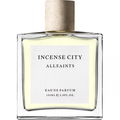


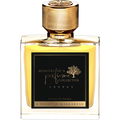










 Merlotsupern
Merlotsupern BoBoChamp
BoBoChamp Tommy0286
Tommy0286 Ch03np
Ch03np NicheOnly
NicheOnly Axiomatic
Axiomatic Eggi37
Eggi37 Danny264
Danny264 Stella73
Stella73 Luwa
Luwa